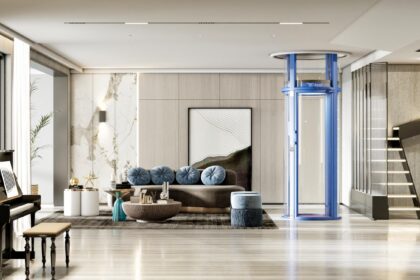Renovating a bathroom is one of the most rewarding home improvement projects. It can completely transform the look and feel of your space while adding real value to your property. Whether you’re tackling a complete remodel or simply updating fixtures, planning is the key to success. Understanding every stage of the process can help you make wise choices, manage timelines, and stay within budget — especially when considering factors like bathroom renovation cost Sydney.
Below is a practical, step-by-step guide to help you plan your bathroom renovation effectively, ensuring it’s both functional and stylish.
Step 1: Define Your Goals and Budget
Before jumping into tiles and tapware, it’s essential to consider why you’re renovating. Are you updating an outdated space, improving functionality, or increasing property value? Clearly defining your goals will influence every decision you make, from layout to material selection.
Once you know your goals, set a realistic budget. Research the average renovation costs in your area and factor in essentials such as plumbing, tiling, and fittings. It’s always wise to include a contingency fund of about 10–15% for unexpected expenses — these are common in older homes where hidden water damage or structural issues can surface during the process.
A clear budget helps you avoid financial surprises and ensures your project stays on track.
Step 2: Assess Your Current Bathroom Layout
Take a close look at your existing bathroom and identify what’s working and what’s not. Consider:
- Is the layout practical?
- Is there enough storage space?
- Does the lighting work well, both in natural and artificial settings?
- Are the plumbing and electrical systems in good condition?
Understanding the limitations of your current space helps you decide whether a complete remodel is needed or if you can work with the existing layout. For instance, moving plumbing fixtures like the toilet or shower can increase costs, so if your current configuration works, try to keep those elements in place.
Step 3: Create a Functional Design Plan
Now comes the creative part — designing your new bathroom. Start by sketching a rough layout, or use free online design tools to visualise your ideas. Striking a balance between aesthetics and practicality is essential.
Here are some key design tips:
- Space efficiency: Opt for wall-hung vanities or floating shelves to make smaller bathrooms feel larger.
- Storage solutions, such as built-in niches, mirrored cabinets, and under-sink drawers, can help reduce clutter and maintain a tidy appearance.
- Lighting layers: Combine task lighting around the mirror, ambient ceiling lighting, and accent lights for warmth.
- Ventilation: Proper airflow prevents mould and moisture damage, so don’t overlook a quality exhaust fan.
Choosing the right materials is also crucial. Opt for moisture-resistant options, such as porcelain tiles, stone benchtops, and waterproof paint, to ensure durability and easy maintenance.
Step 4: Choose a Style That Reflects Your Taste
Bathrooms don’t have to be purely functional — they can also express your personality and style. Whether you prefer modern minimalism, rustic charm, or coastal-inspired design, consistency is key.
To create a cohesive look:
- Choose a colour palette that matches your home’s overall aesthetic.
- Mix textures (like matte tiles with polished fittings) for visual interest.
- Add character through small details such as tapware finishes, mirrors, and lighting fixtures.
Keep in mind that trends come and go, but timeless designs tend to add the most long-term value to your property. Neutral tones, clean lines, and natural materials often stand the test of time.
Step 5: Select Quality Fixtures and Materials
Fixtures and finishes can significantly impact the overall ambience of your bathroom. When choosing, consider both style and functionality.
Key elements to focus on include:
- Vanity: Ensure it provides ample storage and suits your layout.
- Toilet: Opt for a water-efficient model to reduce long-term utility costs.
- Shower and bath: Decide between a walk-in shower, a bathtub, or both, depending on your space and lifestyle needs.
- Tapware and fittings: Choose high-quality options that resist corrosion and complement your design.
Durability is just as important as appearance. While cheaper options might seem appealing initially, investing in reliable materials often saves money in the long run by reducing maintenance and replacement costs.
Step 6: Obtain Necessary Permits and Plan the Timeline
Depending on the scale of your renovation, you might need council approval — especially if plumbing or structural changes are involved. Check your local building codes and permit requirements before starting work.
Once the paperwork is sorted, outline a realistic timeline. Break it down into stages — demolition, plumbing, electrical, waterproofing, tiling, and final fit-out. This helps coordinate trades efficiently and ensures smooth progress.
Allow for flexibility, as delays can occur due to weather, product availability, or unforeseen issues.
Step 7: Prepare for the Renovation Phase
Renovations can be disruptive, particularly if you’re living in the home during the process. Make arrangements in advance, such as setting up a temporary bathroom (if possible) and protecting nearby areas from dust or debris.
Before demolition begins, double-check all orders — tiles, fixtures, and fittings — to avoid delays later on. Communicate clearly with your tradespeople to ensure everyone understands the design plan and timeline.
Staying organised during this phase helps minimise stress and keeps the renovation on schedule.
Step 8: Add the Finishing Touches
Once construction is complete, it’s time to focus on the details that bring your bathroom to life. Add accessories such as towels, plants, mirrors, and artwork to create warmth and personality.
Small touches, such as matching soap dispensers, textured bath mats, or stylish light fixtures, can make a big impact without incurring significant costs. Don’t forget to check for final adjustments — ensuring all plumbing and electrical work functions perfectly before signing off on the project.
Final Thought
A bathroom renovation is a blend of careful planning, thoughtful design, and precise execution. By taking the time to plan each stage — from defining your goals to adding those final styling details — you can achieve a space that feels both functional and luxurious.
While the process might seem overwhelming at first, breaking it down into manageable steps ensures smoother progress and better results. In the end, your renovated bathroom won’t just be a place for daily routines — it will be a reflection of comfort, style, and the care you’ve put into your home.




